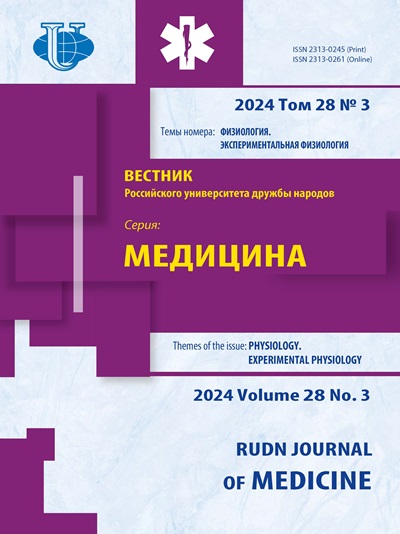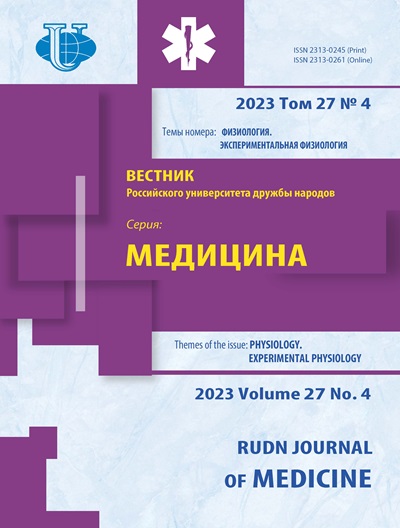History of aviation physiology
- Authors: Grebennikov E.K.1, Grebennikova I.N.1, Subotyalova A.M.1, Subotyalov M.A.1
-
Affiliations:
- Novosibirsk State Pedagogical University
- Issue: Vol 27, No 4 (2023): PHYSIOLOGY. EXPERIMENTAL PHYSIOLOGY
- Pages: 411-418
- Section: PHYSIOLOGY. EXPERIMENTAL PHYSIOLOGY
- URL: https://journals.rudn.ru/medicine/article/view/37167
- DOI: https://doi.org/10.22363/2313-0245-2023-27-4-411-418
- EDN: https://elibrary.ru/CSWYMC
Cite item
Full Text
Abstract
Relevance. In studying the history of medical and biological disciplines, an important part is the identification of the stages of their formation and development. In this regard, it seems important to make a historical and scientific analytical review of the development of ideas about aviation physiology, covering different stages of the history of science and reflecting the contribution of researchers from different regions. It will be useful for teaching historical and scientific and special disciplines, as well as for researchers involved in the study of aviation physiology. The need to understand how the human body functions in flight arose along with the development of aeronautics. The study is devoted to the analysis of the main stages in the development of aviation physiology. The purpose of the study - to characterize the stages of formation and development of aviation physiology. Research methods. In preparing this publication, articles in publications included in the RSCI, PubMed, and Scopus were mainly used. Preference was given to materials published in the last 15 years. The main results present the stages of development of aviation physiology with a description of the contribution of the main researchers in this field. The achievements of domestic scientists, doctors, physiologists I.M. Sechenov, L.A. Orbeli, G.M. Zarakovsky are analyzed, their scientific priorities in the development of this scientific direction are presented. The process of formation and development of aviation physiology as a direction of biomedical knowledge is presented. Before the advent of aviation (19th century), hypoxia was studied in the study of balloon flights. With the advent of high-speed and maneuverable aircraft, aviation physiology began to study the body’s response to overloads caused by highly maneuverable flights. Conclusion . The development of aviation physiology can be divided into two stages. 1. Pre-aviation, within which the emergence of this area of medico-biological knowledge takes place. 2. Aviation, at this stage scientists have the opportunity to study different multidirectional overloads and their effect on the human body. Currently, aviation physiology is one of the important branches of physiology, aviation and space medicine.
About the authors
Egor K. Grebennikov
Novosibirsk State Pedagogical University
Email: subotyalov@yandex.ru
ORCID iD: 0009-0000-5495-7922
SPIN-code: 5283-5396
Novosibirsk, Russian Federation
Inna N. Grebennikova
Novosibirsk State Pedagogical University
Email: subotyalov@yandex.ru
ORCID iD: 0009-0002-7466-3651
SPIN-code: 7369-2925
Novosibirsk, Russian Federation
Anna M. Subotyalova
Novosibirsk State Pedagogical University
Email: subotyalov@yandex.ru
ORCID iD: 0000-0001-8235-4395
SPIN-code: 8681-6985
Novosibirsk, Russian Federation
Mikhail A. Subotyalov
Novosibirsk State Pedagogical University
Author for correspondence.
Email: subotyalov@yandex.ru
ORCID iD: 0000-0001-8633-1254
SPIN-code: 9170-4604
Novosibirsk, Russian Federation
References
- Marotte H. L’exposition de l’Homme à l’altitude en aéronautique: de Paul Bert à nos jours [The exposure of man to altitude when flying: from Paul Bert to today]. Journal of Social and Biological Systems. 2006;200(3):251–255. doi: 10.1051/jbio:2006029. (In French)
- Rodway GW. Limb paralysis and visual changes during Glaisher and Coxwell’s 1862 balloon ascent to over 8800 m. High Altitude Medicine & Biology. 2007;8(3):256–259. doi: 10.1089/ham.2007.8311
- Ushakov IB, Bukhtiyarov IV, Shipov AA. I.M. Sechenov’s creative development of ideas in aviation and space medicine. Russian Journal of Physiology. 2011:97(7):751–758. (In Russian).
- Sorokina TS. Ivan Mikhaylovich Setchenov in the history of Russian and world physiology. RUDN Journal of Medicine. 2014;3:97–107. (In Russian).
- Gunga HC, Kirsch KA. Nathan Zuntz (1847–1920) — a German pioneer in high altitude physiology and aviation medicine, Part II: Scientific work. Aviation Space and Environmental Medicine. 1995;66(2):172–176.
- Zhdan’ko IM, Vorona AA, Lapa VV, Khomenko MN. Scientific and research experimentation center of aviation and space medicine and human engineering celebrates 80th anniversary. Military Medical Journal. 2015;336(3):68–75. (In Russian).
- Grigor’ev AI, Baevskii RM, Galeeva NYu. From the scientific heritage of V.V. Parina (on the development of problems of space medicine and physiology). Aerospace and Environmental Medicine. 2003;37(2):3–11. (In Russian).
- Dietrichs E. Carl Wilhelm Sem-Jacobsen: Aerospace Neurophysiology and Deep Brain Stimulation Pioneer. Neurology. 2022;98(5):199–203. doi: 10.1212/WNL.0000000000013149
- Cooper MG, Street NE. High altitude hypoxia, a mask and a Street. Donation of an aviation BLB oxygen mask apparatus from World War 2. Anaesthesia, Pain and Intensive Care. 2017;45(7):45–48. doi: 10.1177/0310057X170450S107
- Smith BA, Clayton EW, Robertson D. Experimental arrest of cerebral blood flow in human subjects: the red wing studies revisited. Perspectives in Biology and Medicine. 2011;54(2):121–131. doi: 10.1353/pbm.2011.0018
- Harsch V. Theodor Benzinger, German pioneer in high altitude physiology research and altitude protection. Aviation Space and Environmental Medicine. 2007;78(9):906–908.
- Ritman EL. Earl Wood — a research career noted for development of novel instruments driven by the power of the indicator dilution concept. Journal of Applied Physiology. 2014;117(9):945–956. doi: 10.1152/japplphysiol.00491.2014
- Ryan KL, Loeppky JA, Kilgore DE Jr. A forgotten moment in physiology: the Lovelace Woman in Space Program (1960–1962). AJP Advances in Physiology Education. 2009;33(3):157–164. doi: 10.1152/advan.00034.2009
- Dvornikov MV, Medenkov AA. Marine, aviation and space physician, psychologist and physiologist (to the 90th anniversary of the birth of G.M. Zarakovskii). Military Medical Journal. 2015;336(4):81–83 (In Russian).
















